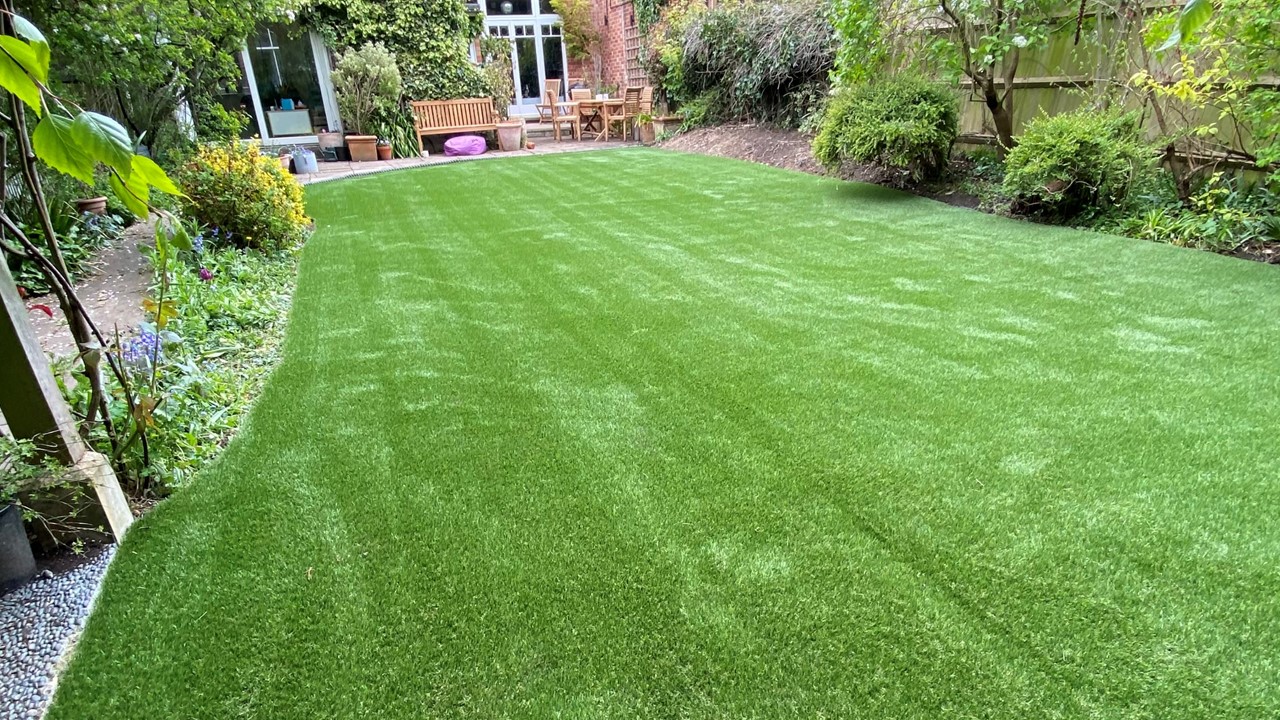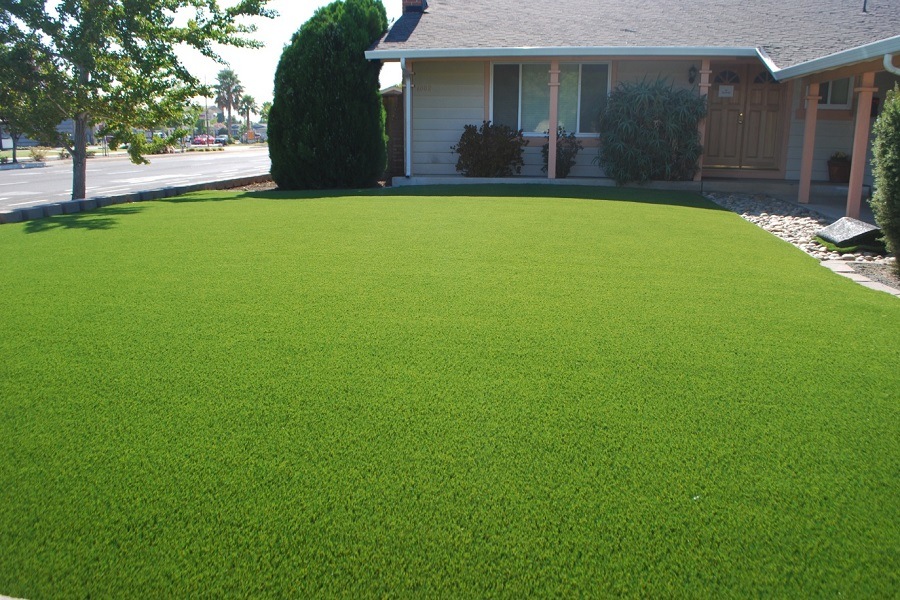When it comes to installing artificial grass, ensuring a seamless and long-lasting result requires expertise, proper materials, and careful attention to detail. Whether you’re transforming your backyard into a low-maintenance green space or creating a high-traffic sports field, a successful installation depends on the techniques used by your artificial grass fitters. In this article, we’ll explore how you can achieve a flawless installation that will last for years.
1. Selecting the Right Fitters with Experience
The key to a perfect installation starts with choosing the right artificial grass fitters. Look for professionals with extensive experience and a proven track record in installing synthetic turf.
- Industry Expertise: Experienced fitters are familiar with different types of artificial grass and the specific installation methods required for various surfaces, whether it’s a residential lawn, commercial area, or sports field.
- Portfolio of Completed Projects: Review the fitters’ previous installations to gauge their ability to handle projects similar to yours. High-quality work is reflected in how natural and seamless the finished turf looks.
- Certifications and Training: Certified fitters undergo specialized training in artificial grass installation, ensuring they follow industry standards and best practices.
2. Proper Ground Preparation
The foundation of a long-lasting artificial grass installation lies in the preparation of the ground. Properly preparing the surface prevents issues like uneven turf, poor drainage, and premature wear.
- Clearing the Area: Fitters will start by removing any existing grass, weeds, rocks, and debris. This ensures a clean, smooth surface for the new turf to be installed on.
- Excavation: For most installations, a layer of soil (typically 3-4 inches) is excavated to create space for the sub-base. This step is crucial for ensuring that the turf sits evenly and is well-supported.
- Installing a Weed Barrier: To prevent weeds from growing through the artificial grass, fitters will install a weed barrier fabric. This also helps keep the surface stable and free of any unwanted vegetation.
3. Creating a Stable Sub-Base
A solid sub-base is essential for the long-term performance of artificial grass. The sub-base provides support, ensures even drainage, and prevents the turf from shifting or sinking over time.
- Using Crushed Stone or Aggregate: Fitters will lay down a sub-base made of crushed stone or aggregate, which helps to create a stable and well-draining foundation. This material is spread evenly across the surface and compacted.
- Compaction and Leveling: The sub-base needs to be compacted with a vibrating plate compactor to prevent any future settling. The fitters will ensure the surface is perfectly level to avoid bumps or uneven areas in the final installation.
- Adding Drainage Solutions: If the area is prone to water pooling, fitters may install additional drainage channels or systems to ensure proper water flow beneath the artificial grass. This prevents waterlogging and extends the lifespan of your turf.
4. Cutting and Laying the Artificial Grass
Once the sub-base is prepared, the fitters will unroll the artificial grass and carefully position it over the surface. Precision during this stage is essential for a seamless finish.
- Accurate Measurements and Cuts: Fitters will take precise measurements and carefully cut the artificial grass to fit the dimensions of your lawn or garden. Special care is taken to ensure clean edges around pathways, flower beds, and other landscaping features.
- Avoiding Seams: For larger areas, multiple pieces of artificial grass will need to be joined together. Fitters use expert techniques to ensure the seams are nearly invisible. Proper alignment of the grass fibers at the seams is key to achieving a natural, continuous look.
- Correct Direction of Grass Fibers: Professional fitters will pay attention to the direction in which the grass fibers lay, ensuring that all pieces of turf face the same way to create a cohesive and natural appearance.
5. Securing the Grass for Long-Term Stability
To prevent the artificial grass from shifting or moving, the fitters will secure it with the appropriate tools and techniques. A properly secured turf ensures long-term stability, even in high-traffic areas.
- Fixing the Edges: The edges of the grass are secured using landscape nails, pins, or turf glue. This step ensures that the grass stays in place over time, preventing any curling or shifting at the edges.
- Tacking Seams and Corners: Seams between different sections of grass are carefully glued or stapled down to ensure they remain secure. Corners are given extra attention, as these areas are more prone to lifting.
- Adding Infill: Fitters will often apply an infill material, such as silica sand or rubber granules, to help weigh down the turf, provide cushioning, and keep the grass blades standing upright. The amount and type of infill will depend on the usage of the space (e.g., play areas vs. decorative lawns).
6. Brushing and Grooming the Grass
After the artificial grass has been laid and secured, fitters will brush the surface to give it a polished, natural appearance. This final step enhances both the look and functionality of your new lawn.
- Brushing the Fibers Upright: A power brush or specialized rake is used to lift the grass fibers and evenly distribute the infill. This gives the lawn a fuller, more natural look and prevents the fibers from laying flat.
- Final Adjustments: Fitters will make any final adjustments to ensure that seams are invisible, the surface is even, and the turf looks as realistic as possible.

7. Post-Installation Inspection
A reliable fitter will perform a thorough inspection of the completed installation to ensure everything is in perfect order before leaving the site.
- Inspecting Seams and Edges: The fitters will check for any visible seams or loose edges and make any necessary adjustments to ensure a seamless appearance.
- Checking for Drainage: They will ensure that the artificial grass drains correctly and that there are no areas where water could pool or collect.
- Final Walkthrough: Many fitters will also conduct a final walkthrough with the homeowner, explaining any maintenance tips and answering questions about the new lawn.
8. Long-Term Maintenance for Durability
While artificial grass requires minimal maintenance, following a few simple guidelines can help extend its lifespan and keep it looking fresh.
- Regular Brushing: Periodically brushing the grass helps keep the fibers standing upright and prevents matting, especially in high-traffic areas.
- Cleaning Debris: Remove leaves, dirt, and other debris with a leaf blower or rake to keep the surface clean. This helps maintain the appearance and functionality of the turf.
- Rinsing: Occasionally rinsing the grass with water can help remove dust or dirt, especially in dry climates or areas where pets are active.
Conclusion
Hiring experienced artificial grass fitters and following best installation practices is key to ensuring a seamless and long-lasting lawn. From ground preparation to securing and brushing the grass, every step of the installation process is critical for achieving a flawless result that stands the test of time. With a professionally installed synthetic lawn, you can enjoy the benefits of a beautiful, low-maintenance green space for years to come.
